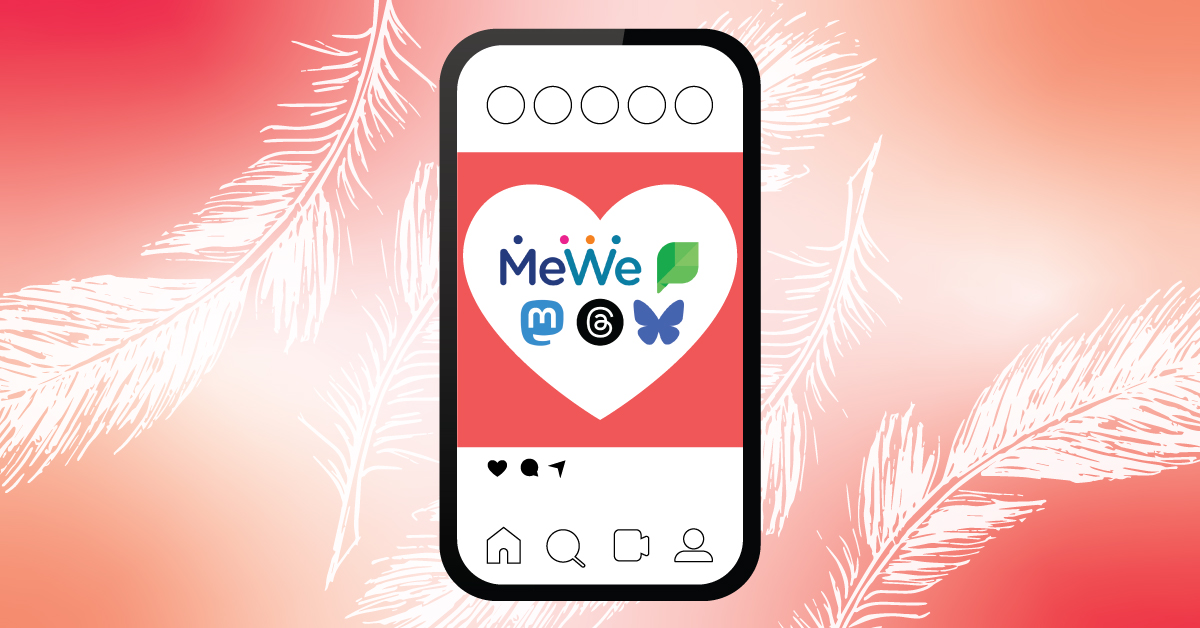
New Social Media Platforms For Nonprofits
01/25/24
digital design
In an era dominated by social media giants, nonprofits are increasingly seeking out alternatives options. This has led to several new social media platforms for nonprofits that you might consider.
Today we’ll be going over some of the reasons you should take new social media platforms seriously if you work at a nonprofit. This will help you improve your overall social media marketing. We’ll also be covering five new social media platforms you might look into, as well as specific tips for each one.
Why Use New Social Media Platforms As A Nonprofit?
Let’s start with a question: why would you want to use a new social media platform as a nonprofit? We’ve all heard of Facebook, LinkedIn and Twitter. These are proven platforms that can get you closer to your goals – why branch out?
New social media platforms actually provide a fantastic opportunity for nonprofits to get ahead. Here are four reasons to consider:
Diversified Reach
Utilizing various platforms allows nonprofits to cast a wider net. This puts your message (and mission) in front of a diverse audience. Keep this in mind – different people will naturally have different preferences and habits. The kind of content they prefer to consume will always vary – and using new social media platforms takes advantage of this.
Adaptability To Trends
Social media trends evolve rapidly. By being present on multiple platforms, nonprofits can adapt to emerging trends more effectively. They’re also able to more quickly tailor their content to suit the preferences of each audience.
Community-Building
Different platforms cater to different kinds of communities. While some thrive on threaded discussions (as we will see below), others focus on visual content. Is community-building a big goal at your nonprofit? Different social media platforms can make it happen.
Risk Mitigation
Relying solely on one or two platforms poses risks. Algorithm changes, account bans, or policy shifts can significantly impact your overall reach. If you use several social media platforms, you are diversified as a result.
5 New Social Media Platforms For Nonprofits
1) Bluesky Social
This platform is the result of the Bluesky decentralized social networking project. It promises increased user control and decentralization. It is somewhat similar to X (formally Twitter).
Tips for Nonprofits:
- Leverage decentralized features for enhanced privacy and security. This is the big selling point of Bluesky: users want more privacy. If you can keep this in mind, the platform can be a great place to interact with audience members in a place they are comfortable with.
- Create community-driven campaigns for increased engagement. While this is relevant for just about any social media platform, it’s especially important on Bluesky.
2) Mastodon
Mastodon, an open-source platform, is technically made of multiple servers. This allows you to connect with people from all around the world in different “communities”, and functions very similarly to other social media platforms.
Tips for Nonprofits:
- Be sure to join the right server. This is by far the most important choice you need to make. You can always migrate to a new server, but picking the right one (with the right people) at the beginning will set you up for success.
- Follow the admins of whichever servers you are interested in. This will give you an insight into how different groups of people function on Mastodon, and their overall interests. Much easier to make content that appeals to them!
3) Threads
We’ve all heard of Facebook’s rival to X (formerly Twitter). Threads is designed for organized conversations, and offers dedicated threads for specific topics. While the popularity of Threads has declined in recent months, it’s still a platform you should consider.
Tips for Nonprofits:
- Use dedicated threads for campaigns, events, and ongoing discussions. This can drive a lot of audience engagement. Assuming the discussion is valuable, it can also lead more people to your own website or email list.
- Encourage community participation. This is relevant everywhere online, but the algorithms that run Threads are particularly focused on these kinds of conversations. Be sure to reply to peoples’ responses and keep the conversation going!
4) MeWe
Known for privacy advocacy, MeWe lets you build communities without intrusive ads. Similar to Facebook in layout, the platform nonetheless offers a unique user experience.
Tips for Nonprofits:
- Embrace MeWe’s commitment to privacy in communication. Their big selling point is complete control over your personal data, which sets it apart from other social media giants. Remember this in everything you do on the platform.
- Utilize groups for community building. Given the right topic and discussion, MeWe gives you a chance to build a tight-knit following that listens to what you have to say. This can work wonders for your lead generation.
5) SproutSocial
While not technically a social media platform, SproutSocial is still worth a mention. That’s because it functions as an all-in-one tool for all your social media needs. If there is something you want to optimize with your social media marketing, odds are that SproutSocial can help!
Tips for Nonprofits:
- Analyze your performance. If you are running campaigns with different content across various platforms, you want to know what’s working. Simply go to SproutSocial’s “Reports” tab to get this insight.
- Try “listening” to your audience. You need to know what your audience actually cares about. Thankfully, SproutSocial makes this quite easy. You can search by specific keywords or hashtags to get better ideas on the sorts of campaigns that are really going to move the needle!
…
Are you an enterprise, nonprofit or small business looking for help on your website? Give us a shout! We provide a free consultation. Email us at info@lughstudio.com or call us at (718) 855-1919!









